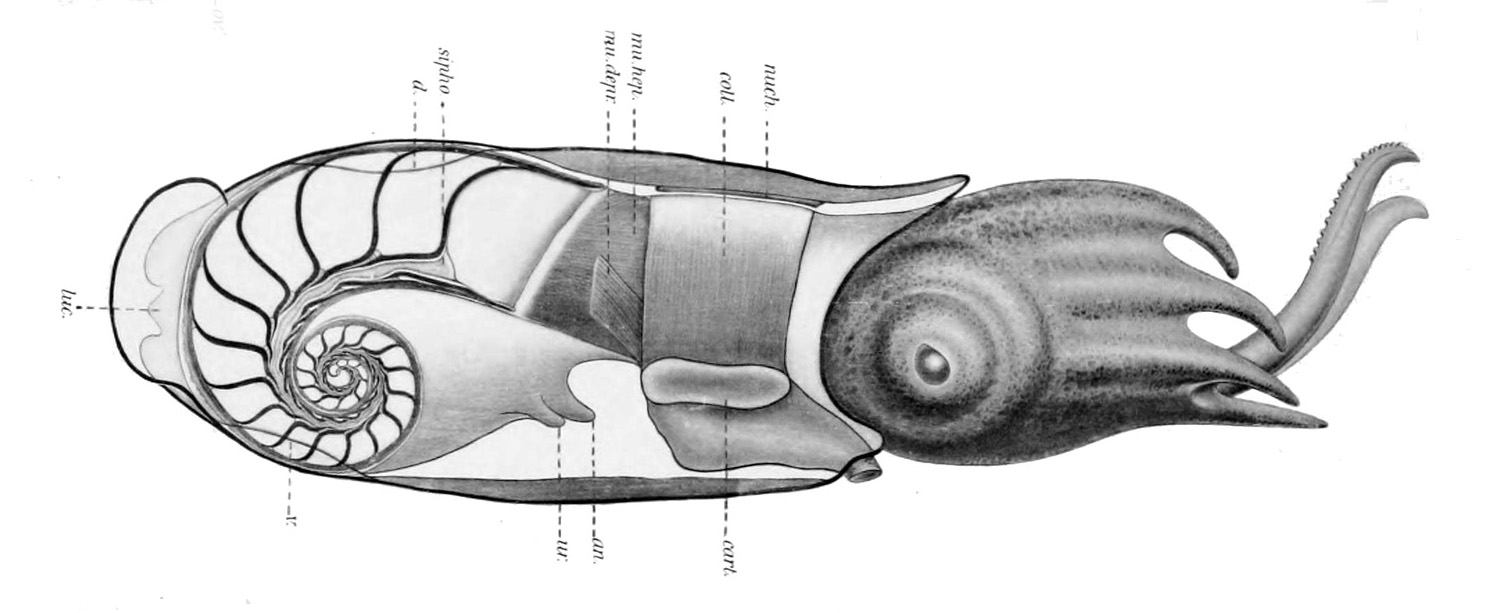Elusive squid seen alive in natural habitat for first time (VIDEO)
Scientists have captured rare footage of a teeny, tiny squid swimming near the Great Barrier Reef; the squid is the only living member of its genus and has never before been observed alive and in its natural habitat.
"Researchers were all surprised to see this squid as it was nothing like any of us had seen before," Valerie Cornet, a masters student at James Cook University in Australia who is currently conducting research with the Schmidt Ocean Institute, told Live Science in an email. The ram's horn squid (Spirula spirula) swims with its body in an unusual vertical position with its arms and tentacles pointed up; at the bottom end of the squid, two ear-shaped fins ripple in the water to keep the animal afloat. In the footage, the squid can also be seen zooming downward through the water column while remaining perfectly vertical.
Schmidt Ocean Institute researchers spotted the squid using a remotely operated vehicle (ROV) — an underwater machine that can be controlled from the ocean surface — while mapping the northern Great Barrier Reef off the coast of Cape York in Australia. While the ROV was cruising at a depth of about 2,760 feet (842 meters), the team saw a small, cylindrical creature pop up on their video feed.
Related: Sea science: 7 bizarre facts about the ocean
The researchers' voices can be heard in the background of the video footage, making observations about the animal as they maneuvered the ROV closer:
"Yeah, that definitely looks like a squid."
"And an interesting one at that!"
Sign up for the Live Science daily newsletter now
Get the world’s most fascinating discoveries delivered straight to your inbox.
"... a little shy!" one added, as the squid zipped downward through the water and out of frame.
"The squid remained upright unmoving as we zoomed in closer to get a better view, but then started swimming off rapidly downwards," Cornet said. "We kept following it around for a couple minutes to study and comment on its unique shape and staring eyes."
The team later identified the cephalopod as a ram's horn squid, named for a coiled shell that sits inside the rounded end of its elongated body. The brown-red-hued squid typically measures less than 2 inches (35-45 millimeters) in length, and while at rest, it floats vertically with its arms pointing up and the mantle — the main body of the squid that contains the shell and internal organs — pointing down. The light shell is thought to give the squid buoyancy.


The squid also emits light from a bioluminescent organ located at the tip of the mantle; this may help the squid avoid predators by minimizing the appearance of its silhouette from above, Cornet said.
"It is particularly interesting as it is rare to see this squid alive, but we often find its open coil shell washed up on beaches," Cornet said. "This is the first time filming the squid with its characteristic 'head down' position," she added.
Related: 24 underwater drones – The boom in robotics beneath the waves
S. spirula is the only living member of the genus Spirula, family Spirulidae and order Spirulida, as all other known members of these evolutionary groups have gone extinct, the Schmidt Ocean Institute wrote in a tweet announcing the discovery.
S. spirula specimens have been found as deep as 5,577 feet (1,700 m) underwater, and scientists think the squids lay their eggs at this depth and that the eggshells withstand over 1,100 pounds (0.5 metric tons) of pressure from the water above, she added. But because the squid hasn't been studied alive in the wild, little is known about its distribution or behavior, Cornet said.
For instance, "the social structure of this species is currently unknown," Cornet said. "It was previously thought that these were a type of schooling squid, but having discovered it alone, this may not be the case."
In addition to spotting the elusive squid, the researchers discovered a number of undescribed species of corals, sponges and jellies while mapping the Great Barrier Reef. What's more, they also found a never-before-seen coral reef that stands taller than the Empire State Building. Samples and footage gathered during the fruitful expedition will keep the researchers busy for years to come, Cornet said.
Originally published on Live Science.

Nicoletta Lanese is the health channel editor at Live Science and was previously a news editor and staff writer at the site. She holds a graduate certificate in science communication from UC Santa Cruz and degrees in neuroscience and dance from the University of Florida. Her work has appeared in The Scientist, Science News, the Mercury News, Mongabay and Stanford Medicine Magazine, among other outlets. Based in NYC, she also remains heavily involved in dance and performs in local choreographers' work.









